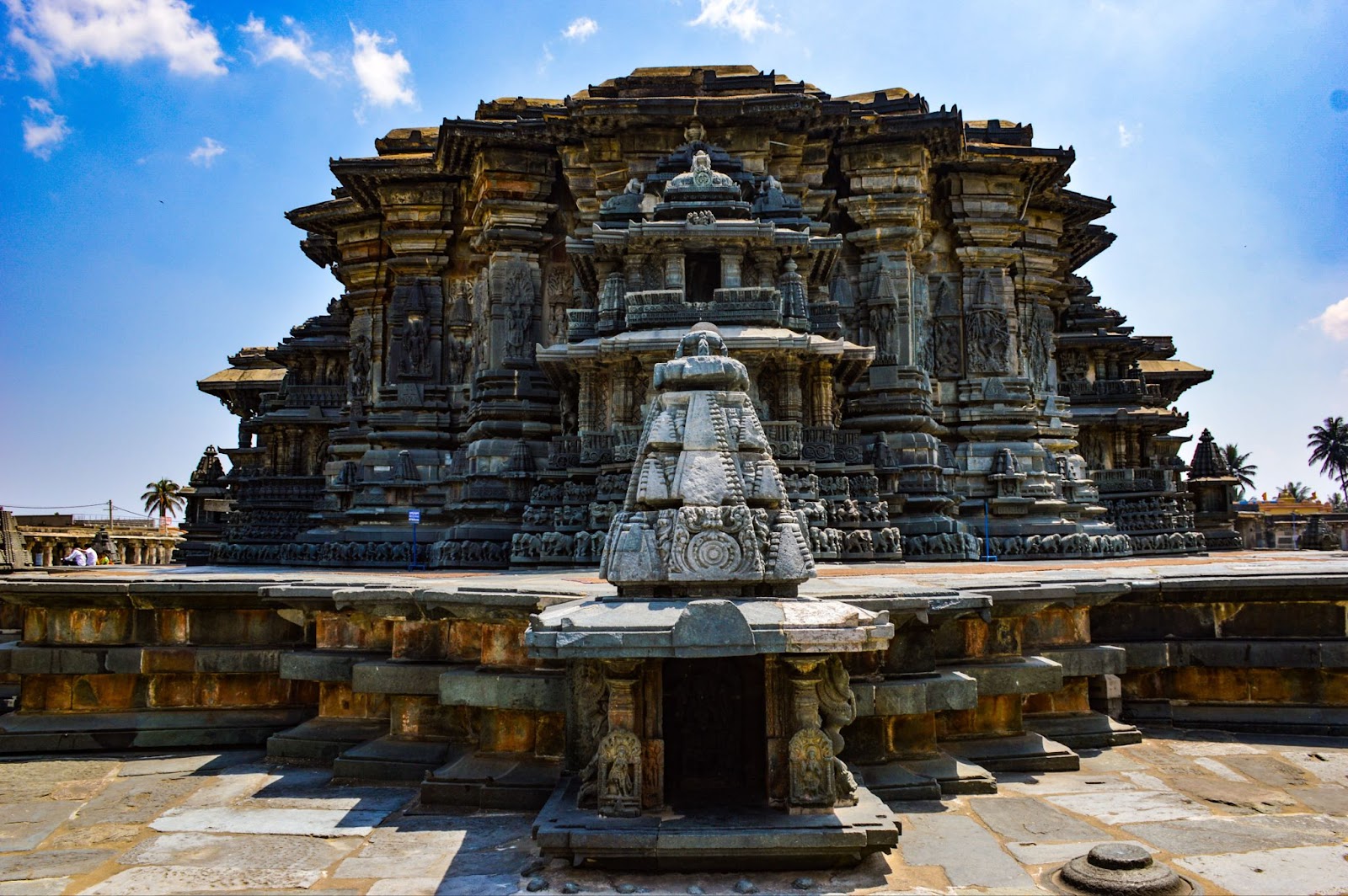
Credit: Sourav Ghosh (Bongyatri)
About Sri Chennakesava Temple
A testament to the glorious era of the Hoysala empire, Belur is nestled on the banks of the Yagachi River. There are numerous hoysala temples, like Sri Chennakesava Temple along with the temples at Halebid and Somnathpur that are UNESCO World Heritage Site nominees. The Sri Chennakesava Temple, located in Belur, Karnataka, India, is a stunning example of Hoysala architecture, built to honour the god Vishnu. Here are some fascinating facts about this magnificent temple:
History
Belur was the major attraction of the Hoysala empire. After the decline of the Chalukyas, the Hoysala established Belur as its capital after the fall of Halebid to Malik Kafur in the 14th century. To commemorate his victory over the Chola dynasty, the king Vishnuvardhana commissioned the temple in 1117 CE. Located in Belur, Karnataka, India, it was built to honour the god Vishnu and considered a shift from Jainism to Hinduism.
Chennakesava temple
Dedicated to Soumyanayaki and Ranganayaki, the Chennakesava temple took 103 years to complete. Veera Ballala II, King Vishnuvardhana’s grandson, completed the final task.
Architecture of Sri Chennakesava Temple
The the temple is quite unique with its intricate carving on walls and star-shaped platforms. The interiors and exteriors of the temple are beautifully carved, depicting scenes from epics like the Ramayana and Mahabharata. Numerous depictions of gods, animals, dancers, and godesses reflect the lifelike expression of that time period.
The famous artisan of that time, Jakanchari, was the main sculptor of the Cheenakesava temple that showed its mastery on the temple
Among all the sculptors, Darpana Sundari (the lady with a mirror) is one of the masterpieces. delicate beauty with graceful figures speaks about the Hoysala sculpture.
The ceiling work on the temple is carved with impeccable geometric designs that even a single miscalculation would have marred the entire design. Each pillar of the temple is designed with a distinctive carving style. Among its Narasimha pillars is quite fascinating to watch because of its ability to rotate on its base.
Besides a central shrine dedicated to Saptamatrikas (seven mother goddesses), which are forms of Vishnu, there are over 80 dieties in varying postures in the outer sanctum of the temple.
